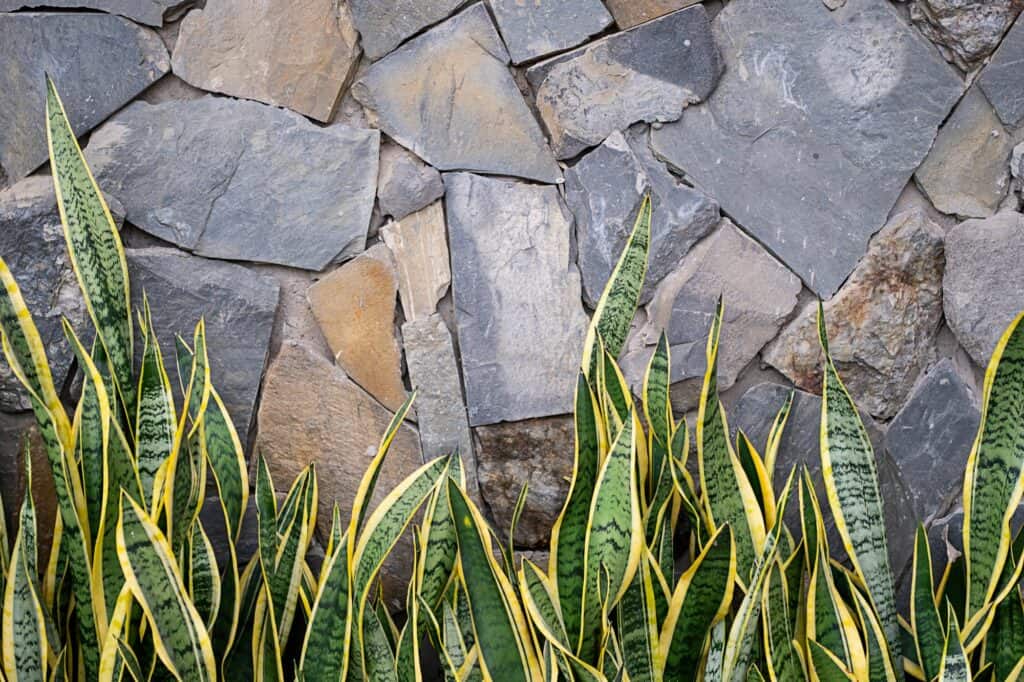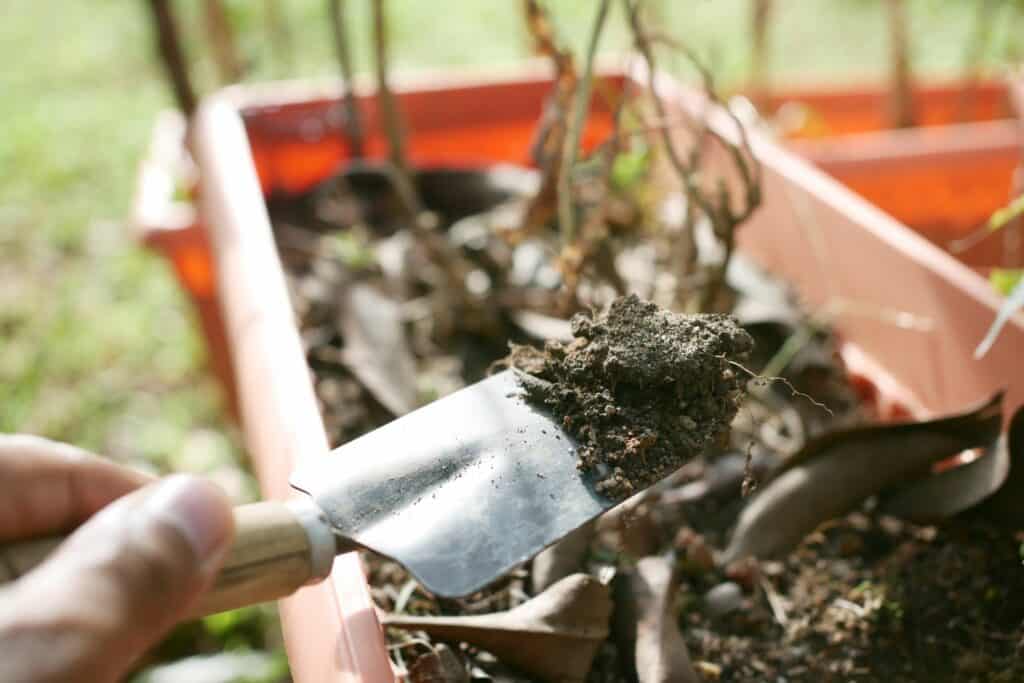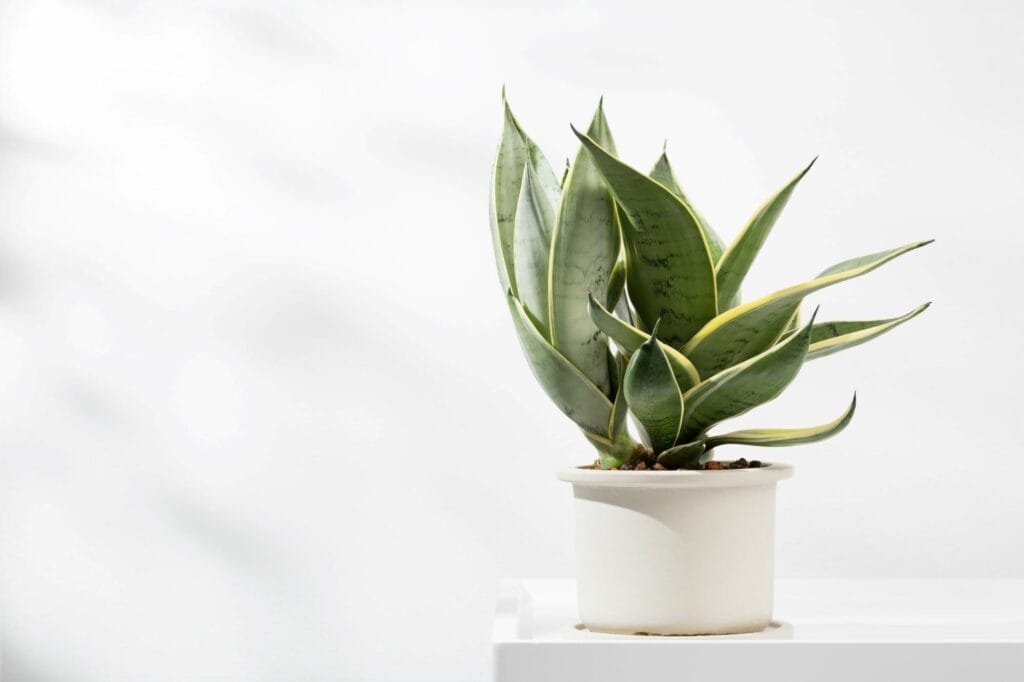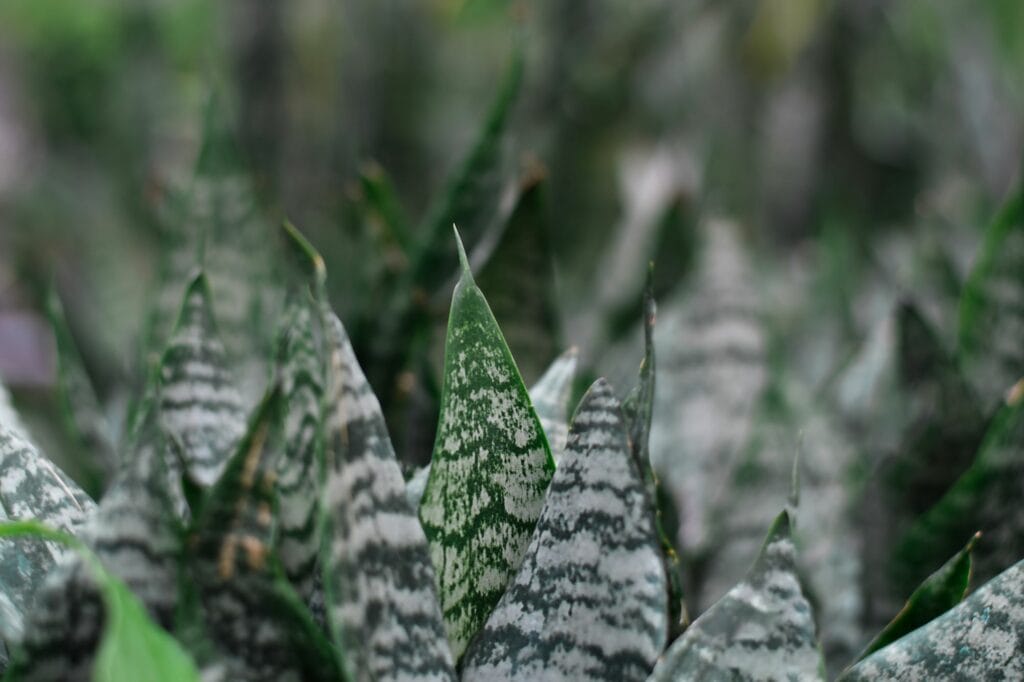Snake plants, also known as Sansevieria, are popular houseplants because of their low maintenance and ability to thrive in low light conditions.
However, even with the best care, snake plants can sometimes die. Knowing what a dying snake plant looks like can help you identify the problem early and take steps to save it.
A dying snake plant may show signs of yellowing leaves, wilting, and browning tips. These symptoms can be caused by a variety of factors, including overwatering, underwatering, poor drainage, lack of sunlight, pests, diseases, and more.
It is important to identify the cause of the problem before attempting to revive the plant, as different causes require different solutions.
Understanding the signs of a dying snake plant and the common causes of its demise can help you take the necessary steps to save your plant.
By paying attention to the plant’s watering and light needs, soil and drainage conditions, and signs of pests and diseases, you can keep your snake plant healthy and thriving for years to come.
Key Takeaways
- A dying snake plant may show signs of yellowing leaves, wilting, and browning tips.
- Common causes of a dying snake plant include overwatering, underwatering, poor drainage, lack of sunlight, pests, and diseases.
- Identifying the cause of the problem is crucial for reviving a dying snake plant.
Don’t miss more content on snake plants:
Is My Snake Plant Dying? 5 Signs, Solutions & Best Care Tips
How to Revive a Dying Snake Plant: 5 Tips

Identifying a Dying Snake Plant
Snake plants are known for their hardiness and resilience, but they are not invincible. A dying snake plant can show several signs and symptoms that indicate it needs help. Here are some of the most common signs to look out for:
Leaves
The leaves of a dying snake plant can provide valuable clues about its health. Brown leaves are a common sign of trouble, especially if they are soft or mushy to the touch. Discoloured leaves, such as those with yellow spots or white spots, can also indicate a problem. Curling leaves, drooping leaves, or leaves that are wrinkled may also be a sign that your snake plant is struggling.
Roots
The roots of a snake plant can also reveal whether it is dying or not. If the roots are brown or mushy, this can be a sign of root rot, which is a common problem for snake plants. Leggy growth or stunted growth can also indicate root problems.
Overall Appearance
A dying snake plant may have an overall appearance that is different from a healthy plant. Leggy growth, where the leaves are spaced far apart, can be a sign of a problem. Stunted growth, where the plant is not growing as quickly as it should, can also be a sign of trouble.
Common Causes of a Dying Snake Plant
Snake plants are known for their hardiness and ability to survive in a variety of conditions. However, they are not invincible and can still succumb to various issues that can cause them to die. Here are some of the most common causes of a dying snake plant:
Overwatering
Overwatering is the most common cause of snake plant death. When the soil is constantly wet, the roots can begin to rot, causing irreversible damage to the plant. Signs of overwatering include yellowing leaves, a mushy stem, and a foul odor coming from the soil.
Underwatering
While overwatering is a common problem, underwatering can also cause a snake plant to die. When a snake plant doesn’t receive enough water, its leaves will start to droop and turn brown, and the soil will become dry and hard.
Direct Sunlight
Snake plants prefer bright, indirect light and can be damaged by direct sunlight. If a snake plant is exposed to too much sun, its leaves will start to turn yellow and brown, and the plant may even develop sunburn.
Temperature
Snake plants are sensitive to extreme temperatures and can be damaged by both hot and cold weather. If a snake plant is exposed to temperatures that are too low or too high, its leaves may start to wilt, turn brown, or even fall off.
Humidity
Snake plants prefer low to moderate humidity levels and can be damaged by high humidity. If a snake plant is exposed to too much moisture in the air, it may develop fungal problems or root rot.
Drainage
Proper drainage is essential for a snake plant’s health. If a snake plant is planted in soil that doesn’t drain well or doesn’t have drainage holes in its pot, it can become waterlogged and develop root rot.
Diseases
Snake plants can be affected by various diseases, including fungal infections and bacterial infections. Symptoms of a diseased snake plant include yellowing leaves, brown spots, and a foul odor coming from the soil.
Stress
Stress can also cause a snake plant to die. Stressful situations for a snake plant can include being moved to a new location, being repotted, or being exposed to extreme temperatures or humidity levels.

Effects of Watering and Light on Snake Plant
Snake plants are known for their drought-resistant nature and ability to thrive in low light conditions. However, improper watering and lighting can cause a snake plant to show signs of distress and eventually die.
Watering
Overwatering is the most common cause of a dying snake plant. When a snake plant is watered too frequently or if the soil is waterlogged, the roots can become damaged and begin to rot. This can cause the leaves to turn yellow or brown, and the plant may start to droop.
On the other hand, underwatering can also cause a snake plant to die. If a snake plant is not watered enough, the leaves may become dry and brittle, and the plant may stop growing.
To ensure a healthy snake plant, it is important to water it only when the soil is dry to the touch. The frequency of watering will depend on the environment and the season. In the summer, the plant may need to be watered more frequently, while in the winter, it may require less water.
Light
Snake plants can tolerate a wide range of lighting conditions, but they prefer bright indirect light. When a snake plant is exposed to too much direct sunlight, the leaves may become scorched and turn brown. On the other hand, when a snake plant is kept in low light conditions, it may not grow as well and the leaves may become pale and thin.
To ensure a healthy snake plant, it is important to provide it with the right amount of light. Bright indirect light is ideal, but the plant can also thrive in low light conditions. Indirect sunlight is also a good option, as it provides enough light without exposing the plant to direct sunlight.
Significance of Soil and Drainage
Proper soil and drainage are crucial for the health of a snake plant. Snake plants prefer well-draining soil that is not too moist. Overwatering and slow-draining soils can cause the leaves to turn yellow or brown and droop with a dying appearance.
It is recommended to use a potting soil that is specifically formulated for cacti and succulents. These soils are designed to provide excellent drainage and prevent water from sitting in the soil, which can cause root rot and other problems.
In addition to using the right soil, it is important to ensure that the pot has adequate drainage holes. Without drainage holes, excess water cannot escape, and the soil can become waterlogged, which can lead to root rot and other issues.
Snake plants prefer dry soil, so if their soil is constantly moist, it can lead to the snake plant’s roots dying due to lack of oxygen or an overgrowth of fungus in the soil.
A typical sign of overwatering is yellow leaves and wilting. After this, the leaves may become soft and mushy, and you may notice a musty smell coming from the soil.
To prevent overwatering, it is recommended to water the snake plant only when the soil is almost completely dry. It is also important to ensure that the pot has adequate drainage holes to allow excess water to escape.
Role of Pests and Diseases
Snake plants are generally low-maintenance and easy to care for. However, they are susceptible to pests and diseases that can cause them to wither and die.
Common pests that can infest snake plants include mealybugs, spider mites, and aphids. These pests can cause significant damage to the plant by feeding on its leaves and stems, and can also spread diseases.
Fungal infections are one of the most common diseases that can affect snake plants. These infections can cause the plant’s leaves to become discoloured, develop spots, or wilt. If left untreated, the fungus can spread to other parts of the plant and cause it to die.
To prevent pests and diseases from damaging your snake plant, it is important to inspect it regularly and treat any issues as soon as they occur.
Providing your plant with the proper environment can also help prevent and treat pests and diseases. For example, snake plants thrive in well-draining soil and can be susceptible to root rot if overwatered.
In addition to providing the right environment, there are several treatments that can be used to control pests and diseases.
For example, insecticidal soap can be used to control mealybugs and aphids, while neem oil can be used to control spider mites. Fungal diseases can be treated with fungicides, but it is important to identify the specific type of fungus before treating the plant.

Importance of Nutrients and Fertiliser
Snake plants require a balanced supply of nutrients to grow and thrive. Nutrients such as nitrogen, phosphorus, and potassium are essential for healthy plant growth. Fertilisers are a common way to provide plants with these necessary nutrients.
Fertilisers come in different forms, such as granules, liquids, and spikes. It is important to choose a fertiliser that is appropriate for snake plants. A fertiliser with an NPK ratio of 20-20-20 is a good choice for snake plants. This ratio provides a balanced supply of nitrogen, phosphorus, and potassium.
Overfertilisation can be harmful to snake plants. It can lead to nutrient burn, which is characterised by brown, crispy leaf tips.
To prevent overfertilisation, it is important to follow the instructions on the fertiliser package carefully. It is also recommended to fertilise snake plants only during their growing season, which is typically from spring to early autumn.
In addition to fertilisers, snake plants also require other nutrients such as calcium, magnesium, and iron.
These nutrients are essential for healthy root development and overall plant growth. It is important to choose a fertiliser that contains these nutrients or to supplement with a separate nutrient source.
Understanding the Snake Plant’s Lifestyle
The snake plant, also known as Dracaena trifasciata or Sansevieria trifasciata, is a popular houseplant that is native to West Africa. It is a succulent plant that is known for its resilience and ability to thrive in a variety of climates and growing conditions.
During the growing season, which typically runs from spring to autumn, the snake plant requires moderate watering and plenty of sunlight.
It is important to avoid overwatering the plant, as this can lead to root rot and other issues. Instead, wait until the soil is dry to the touch before watering again.
However, during the winter months, the snake plant enters a period of dormancy and requires less water and sunlight. It is important to move the plant to a shaded area during this time to prevent it from drying out.
Despite its resilience, the snake plant can still be susceptible to issues such as pests and diseases. Keeping the plant in a clean and well-ventilated environment can help prevent these issues from occurring.

Reviving a Dying Snake Plant
If a snake plant is showing signs of dying, it may still be possible to revive it with proper care. Here are some steps that can be taken to revive a dying snake plant:
Action
The first step is to take immediate action when signs of a dying snake plant are noticed. This may include yellowing or browning of the leaves, wilting or drooping of the plant, or a general lack of new growth.
Revive
To revive a dying snake plant, it is important to identify the underlying cause of the problem. This may include overwatering, underwatering, poor soil quality, or lack of sunlight. Once the cause has been identified, steps can be taken to address the issue and revive the plant.
Prune
If the snake plant has dead or damaged leaves, they should be pruned off to promote new growth. This can be done by cutting the leaves off at the base of the plant using a sharp, clean pair of scissors or pruning shears.
Repotting
If the soil is of poor quality or the pot is too small, repotting the snake plant may be necessary. This can be done by carefully removing the plant from its current pot and placing it in a larger pot with fresh, well-draining soil.
Oxygen
Snake plants require good air circulation to thrive. If the plant is in a poorly ventilated area, it may be necessary to move it to a location with better air circulation.
Cuttings
If the snake plant is beyond revival, cuttings can be taken from healthy parts of the plant and propagated to create new, healthy plants.
Plant Death
If the snake plant has died, it should be removed from the pot and disposed of properly to prevent the spread of disease to other plants.
Healthy
To keep a snake plant healthy, it is important to provide it with the proper care. This includes watering it only when the soil is dry, providing it with bright, indirect sunlight, and ensuring that the soil is well-draining.
New Growth
With proper care, a dying snake plant can be revived and encouraged to produce new growth. This may take some time, but with patience and persistence, a healthy snake plant can be achieved.
Beginners
For beginners, snake plants are a great choice as they are relatively easy to care for and can tolerate a wide range of conditions. With proper care, a snake plant can provide years of beauty and enjoyment.
Frequently Asked Questions
What are the signs of an unhealthy snake plant?
An unhealthy snake plant can have several signs, including yellowing leaves, drooping or wilting leaves, brown or black spots on the leaves, and a mushy or rotten stem. The leaves may also become soft and mushy, and the plant may stop growing altogether.
How can I revive a dying snake plant?
To revive a dying snake plant, you need to identify the cause of the problem. If the plant is suffering from overwatering, you should stop watering it and wait for the soil to dry out before watering it again. If the plant is not getting enough light, you should move it to a brighter location. If the plant has root rot, you should repot it in fresh soil and remove any dead or damaged roots. You can also use a fertilizer to help the plant recover.
Why are the leaves of my snake plant turning yellow and dying?
The leaves of a snake plant can turn yellow and die due to several reasons, including overwatering, underwatering, lack of sunlight, pest infestation, and disease. Overwatering can cause root rot, which can lead to yellowing and dying leaves. Underwatering can cause the leaves to dry out and turn yellow. Lack of sunlight can also cause the leaves to turn yellow and die.
What causes a snake plant leaf to die?
A snake plant leaf can die due to several reasons, including overwatering, underwatering, lack of sunlight, pest infestation, and disease. Overwatering can cause the roots to rot, which can lead to the death of the leaf. Underwatering can cause the leaf to dry out and die. Lack of sunlight can also cause the leaf to die.
What are the reasons for a snake plant dying from the bottom up?
A snake plant can die from the bottom up due to several reasons, including overwatering, underwatering, lack of sunlight, pest infestation, and disease. Overwatering can cause root rot, which can lead to the death of the lower leaves first. Underwatering can cause the lower leaves to dry out and die first. Lack of sunlight can also cause the lower leaves to die first.
Is it possible to save a snake plant with no roots?
It is possible to save a snake plant with no roots, but it requires some effort. You should remove the plant from the soil and cut off any dead or damaged roots. You can then place the plant in a jar of water and wait for new roots to grow. Once the plant has new roots, you can repot it in fresh soil and begin caring for it as usual.

Hey, I’m Lisa and I’ve been an avid gardener for over 30 years. I love writing, talking and living in the garden! Feel free to connect with me on my socials below


